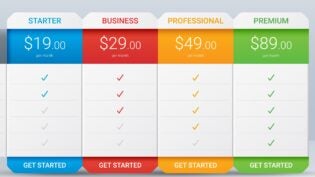
The lives of most sales people seem to be split between two types of frenzied activities—prospecting, trying to find someone willing to talk to you, and chasing down deals. Often, our engagement models are reflections of this frenzy.
We send 1,000s of emails, hoping enough people respond. For those that do, we’re in a rush to qualify—qualifying even the most marginal because our pipelines are empty.
The deals that we do find are tough. Customers are much more educated and informed. They’ve done their homework, they know (or at least think they know) what they are looking for. We face tough competition, work at closing a deal—often winning because we offered the greatest discount.
We eke out some purchase orders, celebrate for a moment, then go back and do the same thing all over again. Prospect, pitch, discount, win/lose, prospect pitch, discount…
Customers’ lives are busy and frenzied, as well. We struggle to get time with them—they’re busy doing other things, plus they let their fingers to the research on the web.
In the end, if we’re lucky, we get to share 2% of our customers’ time with our competitors.
That’s it, it’s pretty startling. The amount of work time customers spend buying—in deals that you can compete for—is roughly 2% of their total work time. That’s roughly 40 hours a year!
It’s impossible to develop relationships, to really understand the customer and what they are trying to achieve, to guide and influence them to help make a great decision if we are limited to the 2% of their time when they are actively buying.
It’s impossible to do our best selling then!
I was struck by a quote from a high performing sales person. He said, “I do my best selling when my customer isn’t buying.”
The trick this sales person had discovered was how to gain access, build credibility, trust, and value. It wasn’t during that 2%—customers behave differently during that 2%. This sales person sought to engage the customer during that 98%. Getting in early, understanding the customer, understanding their business, talking to the customer about new opportunities, getting them to understand new methods, and ways to improve the business. Building the customers’ interests in changing, in looking at new solutions, engaging them long before they are buying.
Top performers, also, act differently after the deal is done. Where most sales people run off in search of the next PO, top performers realize the deal isn’t really done. The customer has to realize the value committed for the solution—they have to make it work. This is, possibly, the highest risk period for the customer. If they don’t get the value committed to their management, they’ve failed! They’ve wasted time, resources, money. They may have lost opportunities. Ultimately, they might lose their jobs.
Top sales performers recognize this. They make sure the customer realizes the value committed. These sales people understand the risks customers take. But they also understand, if they are going to build a strong platform for referrals, or if they want to grow the relationship and results with their customers, they have to realize the value. Top sales performers stay engaged, driving growth in the account and through referrals.
All of this is happening during that 98% of the customer time. All this helps build disproportionate advantage during that 2% of the time the customer is buying. All to better position top performers to win.
There’s not a whole lot of magic in this engage, win, grow process. It’s all based on fundamentals of understanding your customer, building relationships and value in every interchange. Growing those relationships and that value through the life cycles of the relationships they have with all their customers.
Steve Andersen and Dave Stein explore this process brilliantly in Beyond The Sales Process, 12 Proven Strategies For A Customer Driven World.
When I read the book, I was reminded of my early lessons in selling. There were no tricks, no techniques, no manipulation. It was just the basics of understanding what customers value, demonstrating that value in the sales process, and assuring the customer realized the value. Done consistently, I was able to create customers for life and those customers helped me constantly grow my customer base.
Steve and Dave have a time tested approach that’s rock solid. Make sure you take the time to read, study, execute!












